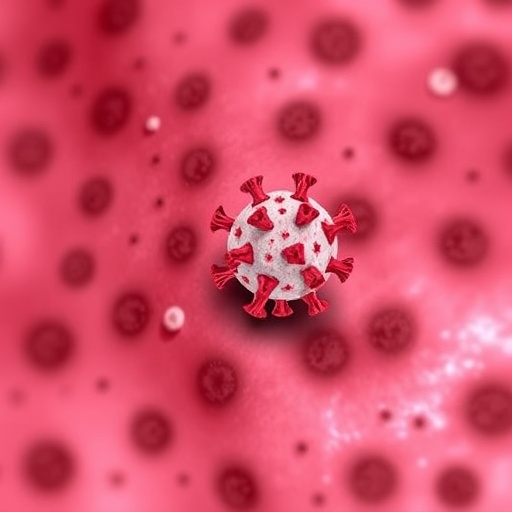Invasive infections caused by Streptococcus pyogenes, commonly known as Group A Streptococcus (GAS), represent a formidable challenge in critical care medicine globally. This pathogen, notorious for its rapid progression to severe clinical conditions such as necrotizing fasciitis, septic shock, and pneumonia, demands vigilant monitoring and effective therapeutic strategies to mitigate its substantial morbidity and mortality. Recent surveillance data reveal a shifting landscape in the epidemiology of invasive Group A Streptococcus (iGAS) infections, underscoring the dynamic nature of bacterial populations and the perpetual arms race between human medicine and microbial evolution.
Prior to the COVID-19 pandemic, Western Europe’s iGAS infections were predominantly caused by the emm1 serotype, a well-characterized strain linked to aggressive disease outcomes. However, in the post-pandemic era, the emergence of a more toxigenic variant, M1uk, has gained prominence across several European nations. This strain, distinguished by molecular markers indicating heightened virulence, initially raised alarms due to its association with pediatric scarlet fever outbreaks. Yet, comprehensive data uncover a more nuanced clinical picture, particularly within adult critical care populations—the demographic most at risk for severe iGAS manifestations.
A collaborative retrospective observational study conducted at the Donostia University Hospital, spearheaded by Drs. Milagrosa Montes, Loreto Vidaur, and Jordi Rello, offers pivotal insights into these evolving trends. The study encompassed 68 adult patients diagnosed with severe iGAS admitted to the intensive care unit over a 15-year span, from 2010 through 2024. This longitudinal approach enabled a robust analysis of infection waves, serotype distributions, and clinical outcomes in relation to epidemiological shifts and treatment adaptations.
Temporal analysis revealed distinct infection peaks in 2014, 2019, and 2023, separated by marked troughs during the COVID-19 pandemic years of 2020 and 2021. These declines correlated with public health interventions aimed at limiting viral transmission, inadvertently suppressing bacterial spread. Molecular characterization elucidated emm1 as the most prevalent serotype throughout the study period, yet a considerable diversity in circulating strains was documented, implicating both respiratory and soft tissue infection pathways. Such heterogeneity raises profound implications for vaccine design, particularly for candidates targeting narrow serotype spectrums, underscoring the necessity for continuous genomic surveillance.
Dr. Montes emphasized the clinical ramifications of serotype diversity, highlighting that variations in dominant strains can profoundly influence not only outbreak dynamics but also the protective scope of immunization efforts. The presence of multiplicity in serotypes necessitates a flexible and adaptive strategy in both public health policy and clinical practice to preemptively address shifts that could compromise prophylactic measures.
Intriguingly, the study’s data on the M1uk lineage warrant attention. Despite its increased prevalence—constituting 85% of severe iGAS cases in 2023—the strain did not contribute to worsened patient outcomes in the ICU setting. Dr. Vidaur noted that while M1uk infections were more common in older patients, mortality rates remained statistically comparable to infections caused by other serotypes. This finding temper initial concerns about the lethality of the emerging strain and provides reassuring evidence for clinicians managing critically ill adults with iGAS.
However, the study’s most impactful insight pertains to therapeutic interventions, particularly the administration of clindamycin. Recognized for its ability to inhibit streptococcal exotoxin synthesis—key mediators of tissue damage and systemic inflammatory response—early clindamycin administration in conjunction with beta-lactam antibiotics significantly improved clinical outcomes. This protocol shift, becoming routine after the COVID-19 pandemic, reduced median clindamycin administration time drastically from 24 hours to a mere hour post-admission, correlating with a substantial decline in mortality rates.
Conversely, delays or omission of clindamycin treatment were associated with up to a fivefold increase in ICU mortality, indicating that timing is critical in leveraging the drug’s toxin-suppressing benefits. Dr. Rello underscored the urgency of integrating clindamycin into initial empirical treatment regimens for suspected iGAS, advocating for protocols that prioritize prompt antibiotic delivery as a life-saving measure.
The evolving therapeutic landscape contributed to a remarkable reduction in overall mortality from 25.5% in the pre-pandemic years to 10% following 2022, despite shifts in strain prevalence. This underscores not only the effectiveness of targeted antimicrobial strategies but also the role of continuous epidemiological monitoring in guiding clinical decision-making. The interplay between advanced molecular diagnostics and clinical vigilance forms the cornerstone of progress against this perilous pathogen.
Sustained epidemiological surveillance remains imperative, as the dynamic nature of S. pyogenes serotypes has direct consequences for vaccine development and public health preparedness. Vaccines restricted to limited serotype groups may face challenges in maintaining efficacy as pathogen populations diversify. The study reinforces that immediate, evidence-based therapeutic responses coupled with diligent pathogen tracking are fundamental to curtailing mortality and managing outbreak scenarios effectively.
Dr. Vidaur’s concluding remarks resonate with the dual imperative faced by healthcare professionals: the need to vigilantly monitor bacterial evolution on a population level while concurrently ensuring rapid, appropriate treatment at the patient level. This two-pronged approach—combining real-time genomic insights with clinical acumen—will be critical to outmaneuvering invasive Group A Streptococcus in the ICU environment and beyond.
In summary, the 15-year retrospective observational study from Donostia University Hospital stands as a testament to the complexity and adaptability of iGAS infections. By elucidating serotype epidemiology, clarifying the clinical impact of emergent strains such as M1uk, and highlighting the lifesaving importance of early clindamycin therapy, it provides a comprehensive framework for tackling one of the most aggressive bacterial infections faced by critical care clinicians today.
Subject of Research: People
Article Title: Severe invasive Streptococcus pyogenes infections: A 15-year Observational study with Molecular Characterization of isolates among intensive care adults
News Publication Date: 1-Sep-2025
Web References: https://doi.org/10.1016/j.jointm.2025.06.001
References: DOI: 10.1016/j.jointm.2025.06.001
Keywords: Infectious diseases, Sepsis, Bacteriology, Antibiotic resistance, Pharmacology, Clinical research, Epidemiology, Public health




